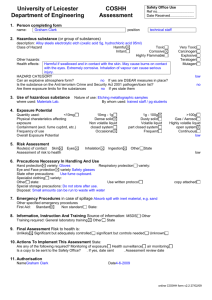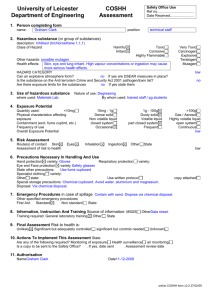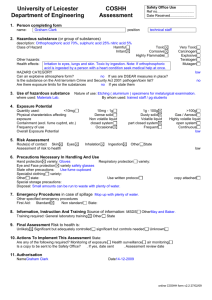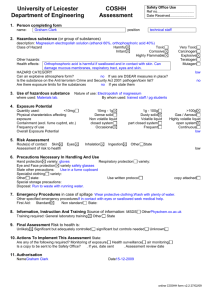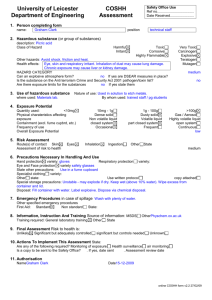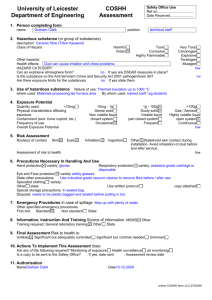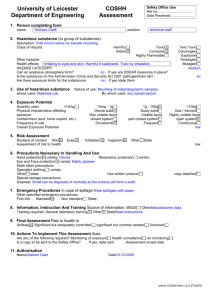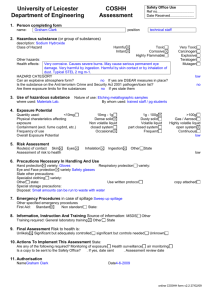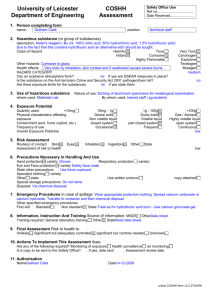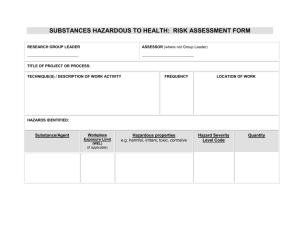Chromium Trioxide - University of Leicester
advertisement
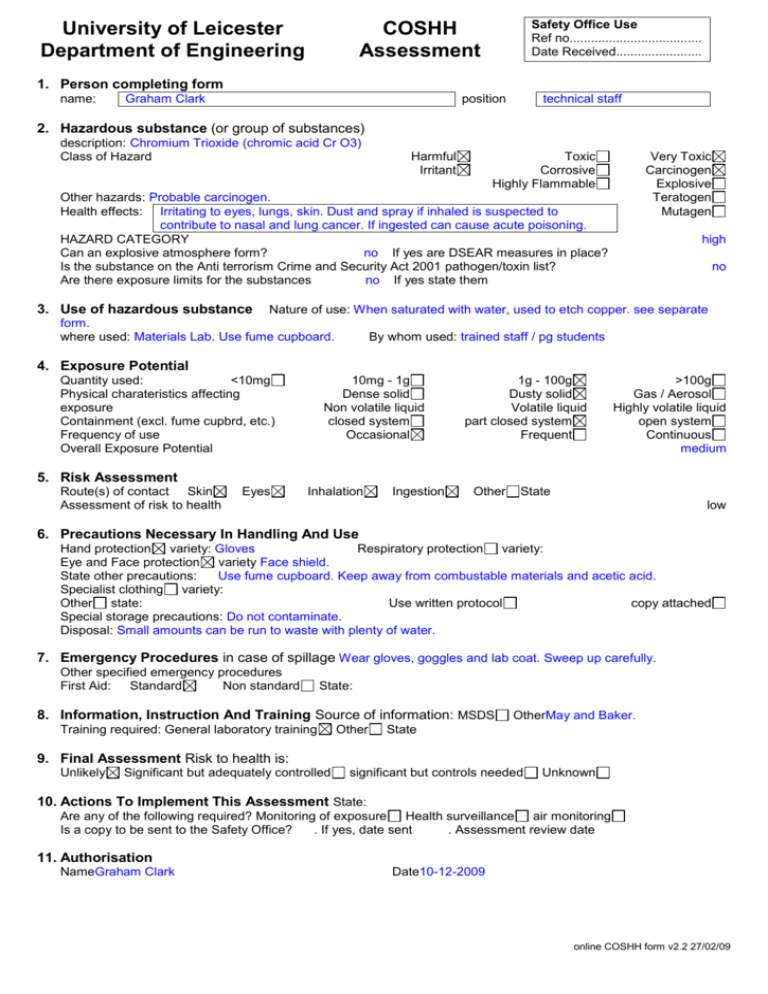
University of Leicester Department of Engineering Safety Office Use Ref no..................................... Date Received........................ COSHH Assessment 1. Person completing form name: Graham Clark position technical staff 2. Hazardous substance (or group of substances) description: Chromium Trioxide (chromic acid Cr O3) Class of Hazard Harmful Irritant Toxic Corrosive Highly Flammable Very Toxic Carcinogen Explosive Teratogen Mutagen Other hazards: Probable carcinogen. Health effects: Irritating to eyes, lungs, skin. Dust and spray if inhaled is suspected to contribute to nasal and lung cancer. If ingested can cause acute poisoning. HAZARD CATEGORY Can an explosive atmosphere form? no If yes are DSEAR measures in place? Is the substance on the Anti terrorism Crime and Security Act 2001 pathogen/toxin list? Are there exposure limits for the substances no If yes state them high no 3. Use of hazardous substance Nature of use: When saturated with water, used to etch copper. see separate form. where used: Materials Lab. Use fume cupboard. By whom used: trained staff / pg students 4. Exposure Potential Quantity used: <10mg Physical charateristics affecting exposure Containment (excl. fume cupbrd, etc.) Frequency of use Overall Exposure Potential 10mg - 1g Dense solid Non volatile liquid closed system Occasional 1g - 100g Dusty solid Volatile liquid part closed system Frequent >100g Gas / Aerosol Highly volatile liquid open system Continuous medium 5. Risk Assessment Route(s) of contact Skin Assessment of risk to health Eyes Inhalation Ingestion Other State low 6. Precautions Necessary In Handling And Use Hand protection variety: Gloves Respiratory protection variety: Eye and Face protection variety Face shield. State other precautions: Use fume cupboard. Keep away from combustable materials and acetic acid. Specialist clothing variety: Other state: Use written protocol copy attached Special storage precautions: Do not contaminate. Disposal: Small amounts can be run to waste with plenty of water. 7. Emergency Procedures in case of spillage Wear gloves, goggles and lab coat. Sweep up carefully. Other specified emergency procedures First Aid: Standard Non standard State: 8. Information, Instruction And Training Source of information: MSDS Training required: General laboratory training Other OtherMay and Baker. State 9. Final Assessment Risk to health is: Unlikely Significant but adequately controlled significant but controls needed Unknown 10. Actions To Implement This Assessment State: Are any of the following required? Monitoring of exposure Health surveillance air monitoring Is a copy to be sent to the Safety Office? . If yes, date sent . Assessment review date 11. Authorisation NameGraham Clark Date10-12-2009 online COSHH form v2.2 27/02/09
